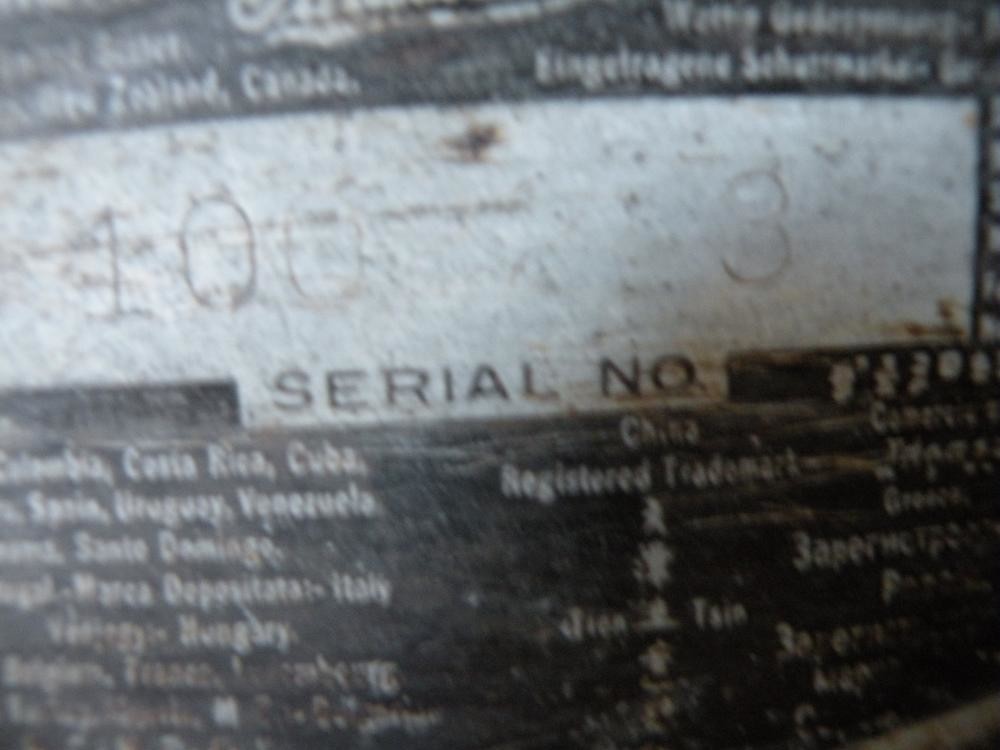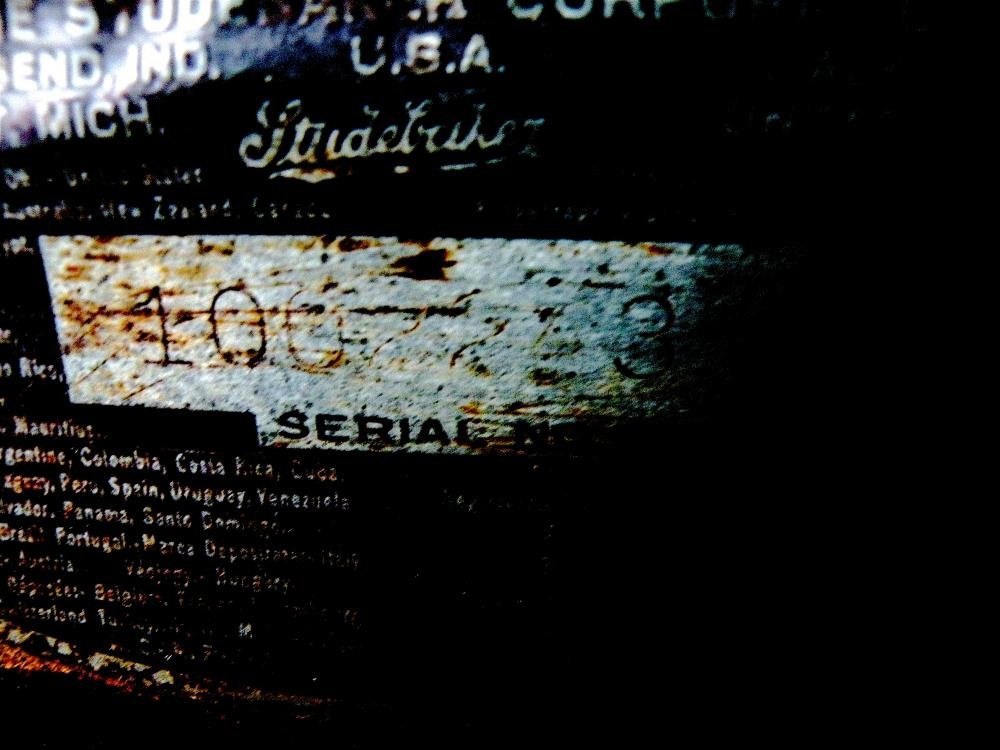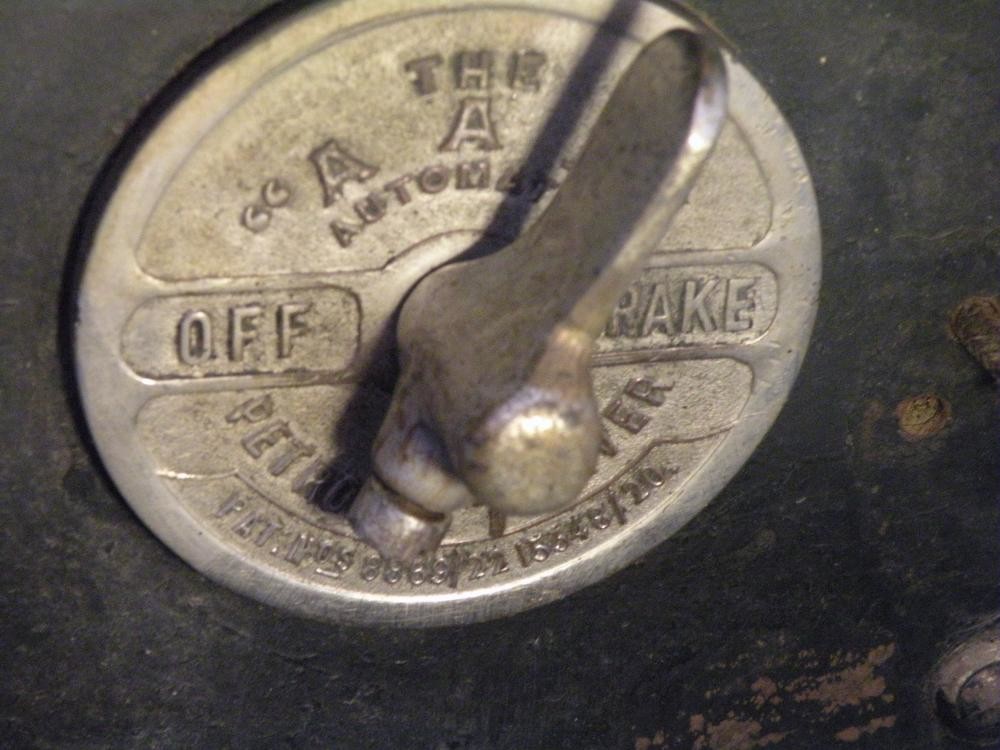You must be logged in to rate content!
6 minute(s) of a 173 minute read
8-19-2017
Hello Again
Having cleaned off the engine number I can confirm that the number shown on the Registration label is the correct one for the ENGINE in the car (2350) How that fits in with the dating of the Chassis-plate Serial Number can now hopefully be ascertained, having cleaned this properly I have to ask, Am I going mad or what?
This is a new photograph taken after cleaning the plate and going over it with pencil. The next option would be to remove the plate from the chassis to see if there is anything more definite when viewed from the back. This is something I would sooner not do. By working on the contrast and shade in photoshop results in the second photograph, this shows the 22 slightly more clearly defined and the next figure could be either a 7 or a 4. How this effects the month and year it was built I will leave to the experts. Perhaps when the AOMC can give me the date that the car was first registered in Australia, this may help to arrive at a year.


"I would imagine during WWII parts and cars would have become very scarce"
Prior to WWII during the late 1920s and 1930s Australia had the "Great Depression". That the car was taken off the road in 1941-2 could have been the result of War time Petrol Rationing and possibly the owner going into the Military Services.
8-20-2017
Hello Scott
It certainly my intention to get the Studebaker going and on the road with the least possible amount of disturbance. Having said that, unfortunately I will have to do something about the seats, door trims and the top, all of which are in tatters or non existent. Likewise the wheels were in desperate need of some paint and tires. On the purely practical side I will need to do some rewiring, with cotton covered wire. Perhaps you can tell me if Studebaker worked to a particular colour scheme for wiring in the same way as Lucas did in English cars?
One other question. Was there a key for the ignition combined with the light switch? If so what did it look like. With some other makes the magneto ignition often had a seperate switch. What did Studebaker do? At present there is an old domestic light switch tucked away behind the dash board and a couple of wires protruding through a hole in the dash. I have not yet got around to tracking where some of the other loose wires go to. Years ago the law here stated that tail lamps must have a switch at the rear of the car. The idea was that if being chased by the police you could not turn off your rear lamps so they could not see where you had gone. You had to stop the car and get out to turn it off. The down side was that on wet, cold winters nights people would not stop and get out to turn them on!
Hello John
I am glad that you can keep track of my various moves around the Forum. If you would really like some bald tires, I have some here you can have, unfortunately the side walls are misshapen and cracked where the car has been standing on them while flat for more years than you could imagine. Getting rid of old tires here is a real problem. Especially large ones that don't qualify as "Car" tires because of their size.
Just an aside on the subject of Petrol Rationing and Petrol saving devises, the early owners of the Light Six were so concerned about saving petrol they had fitted an after market fuel saving device, An AAA "Automatic" Petrol Saver. Popular additions in the 1930s, these devices worked by admitting extra air directly into the inlet manifold via a slide valve. These soon fell out of favour as the almost universal result from their continued use was burnt exhaust valves. Over a great many years I have seen two others. One on the first car I owned a very long time ago, an 1918 Austin 20hp. The next one was a 1925/6 Dodge 4 that I did not own but I was shown on a farm in North Eastern Victoria (Aust) It was mainly notable because it had a large Oak tree growing up through the rear floor should have been. The one fitted to the Studebaker does not have the slide valve, but it has the hole complete with thread tapped into it on the "inlet manifold" . The slide valve has been taken by a souvenir hunter at some time in the past. I am not too disappointed and will simply have a suitable plug made to screw into the hole.

has three positions, Off, On and Brake. In the Brake position the valve was fully open to let in the maximum amount of air while decending hills with the car in gear running against compression. Sometimes refered to as an "Air brake". I will leave the hand control on the Studebaker's dash as otherwise there would be another hole to fill and it is an interesting conversation starter.
It is interesting that looking at the rear on the light/ignition switch the key actuated section is labeled "mag & grd". This indicates that there were switches dedicated to cars with a magneto. The other terminals are labeled "head, rear, horn and battery" with a fuse between battery the three accessory terminals. The bayonet fixing holding the rear section onto the main body of the switch are set at unequal spacing so the it can only go together in the one location. The key section has the number 39 stamped into it so at least I know that this is the "combination" key that I am looking for. If any of the other 1920's Studebaker owners have a key stamped with 39 I would love to get a copy. While many local locksmiths have the Lucas "NRM" combinations in their computers I doubt that any would have the 1920's Studebaker dedicated combinations.